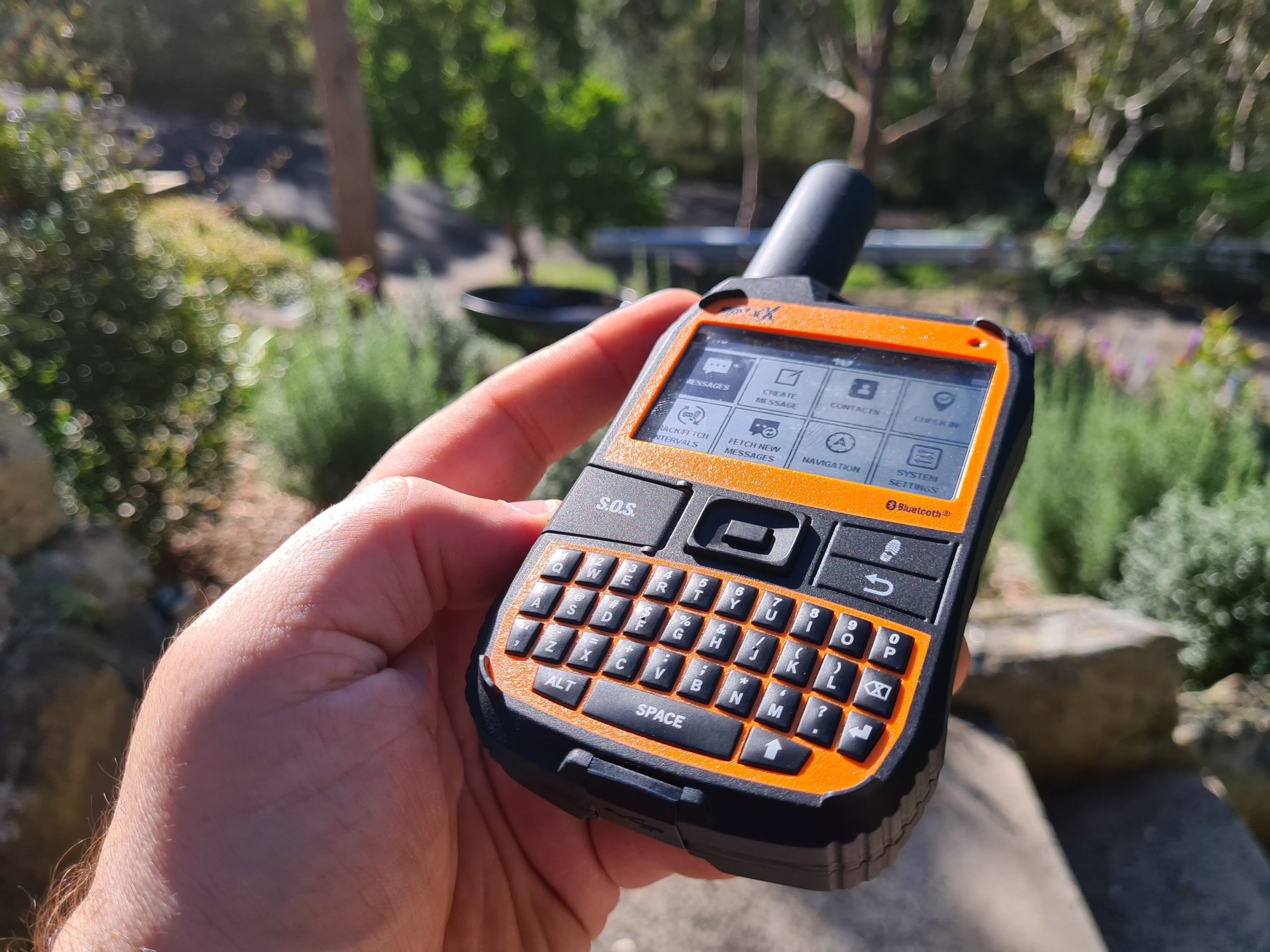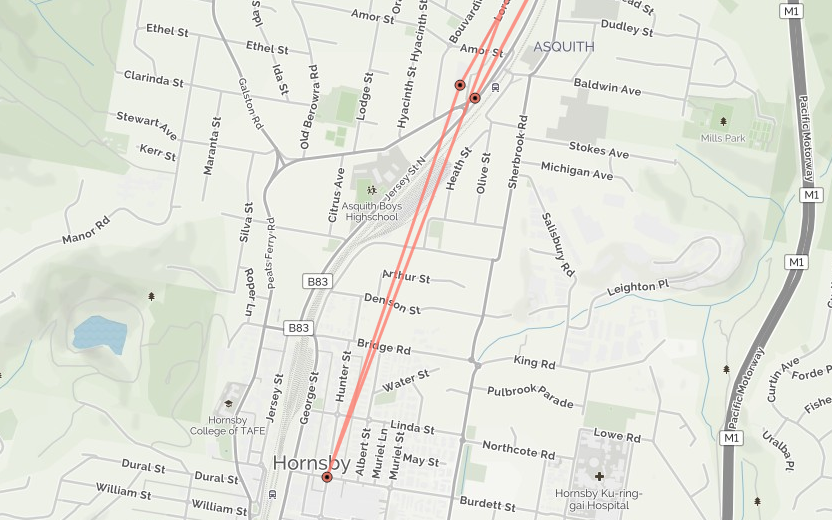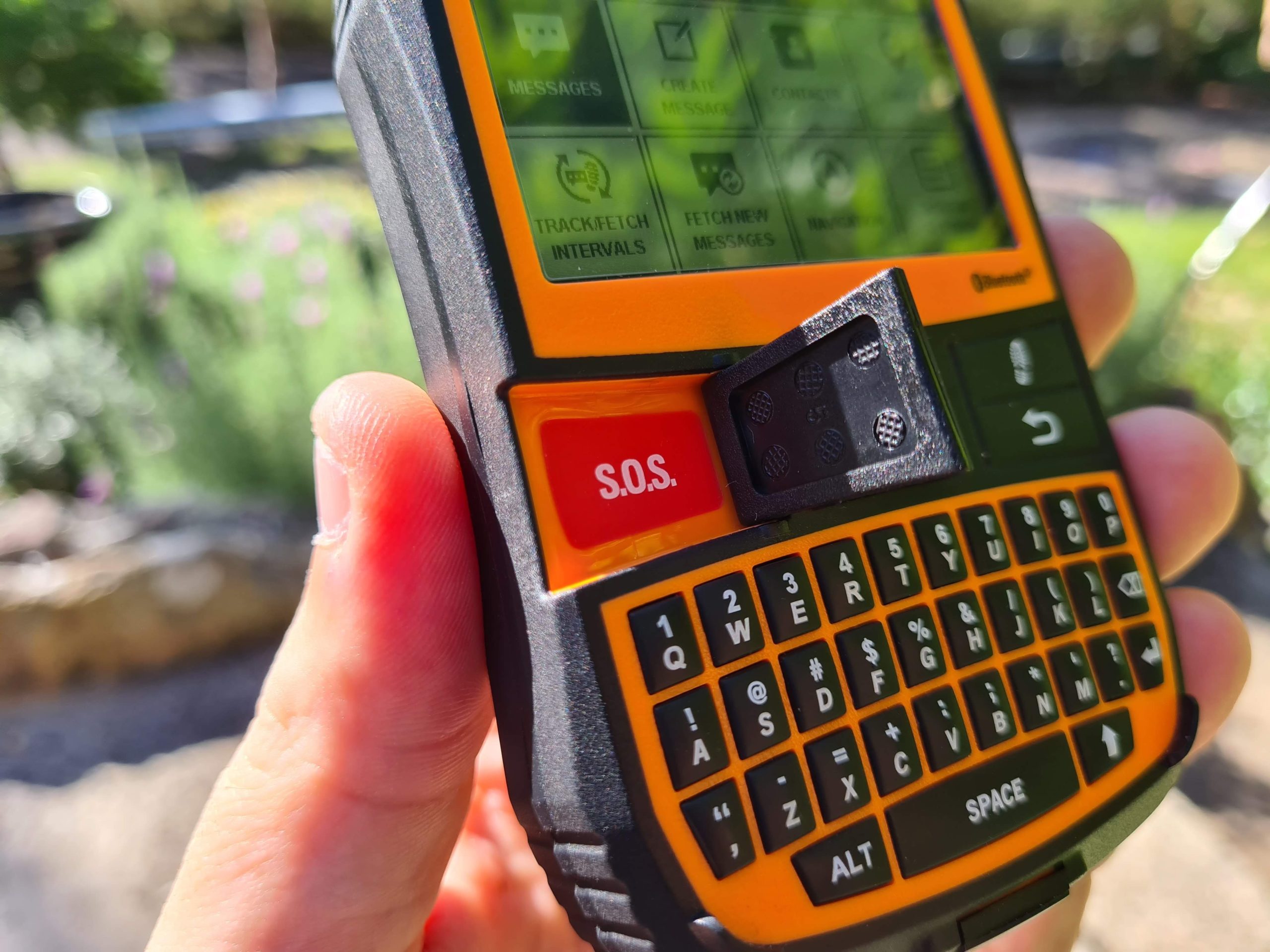We spend an awful lot of time talking about mobile services, and with that term, we typically refer to terrestrial mobile services – things like smartphones, tablets and other connected devices which use land-based mobile services.
What if you’re going somewhere else, though?
If you’re fond of the place known as “off the beaten track”, then chances are you’ve been places where mobile reception is patchy, or worse, doesn’t exist. For many people who favour such places, getting away from mobile reception – and from other humans generally – is kind of the idea, but others enjoy getting away from civilisation with a bit of a safety net, and that’s where Spot X comes in.
What’s it do?
It’s all in the name – the Spot X 2-way satellite messenger is exactly what it’s called; using satellites instead of terrestrial mobile networks, the Spot X works just about everywhere using the Globalstar satellite network. With this, it offers:
- 2-way SMS messaging with any mobile phone on the planet, where you can send text, your location or a tracking link.
- Basic GPS functionality – see your location expressed as latitude and longitude, and use basic waypoint navigation functions.
- Check-in and tracking functionality.
- Pairing with a compatible Android or iOS smart device, so you can put the Spot X somewhere with good visibility, and use your smartphone to drive it.
- Calling for SOS emergency assistance if you get stuck somewhere and can’t get help some other way.
How’s it do?
While Spot X doesn’t do a great deal – the three features listed above are pretty much it – what it does do it does rather well.
SMS messaging isn’t new, having been around for some 25-30 odd years now, but it has always required a mobile network to operate. If you’re in the middle of the ocean, hiking in the mountains or crossing the Australian desert, there’s a good chance a mobile network is something you don’t have access to, but with a satellite communicator, that’s not a major problem.
Once you’ve got a satellite lock – more on that below – you can send messages using Spot X’s built in keyboard rather easily, and once sent, they take about a minute to arrive on your recipient’s mobile. Better yet, they can reply – your SMS will come from a normal mobile number – and you’ll receive their reply after a while.
The nature of satellite communications, and the desire for battery life measured in days rather than hours, means that you don’t receive messages immediately; think of it as like your old-school email where it checks the email server every so often for a reply. You can configure a check interval but something like every 10 minutes seems like a good balance of battery consumption and utility. Of course, if you’re expecting an immediate reply, you can poll for messages whenever you like, provided you’ve got a good view of the sky.
The only downside? Being a global service – it’s in the name Globalstar – your Spot X comes with a US mobile number, so while it almost certainly won’t cost your recipients anything to receive a message from you, it most likely will cost them a little bit to reply.
Still, considering this is something that’s meant for irregular use – it doesn’t replace your mobile phone, after all – it’s not a huge inconvenience; if its the difference between staying in touch with key messages and being out of touch completely, it’s a reasonable compromise.
By comparison, the GPS functionality is pretty well useless. You could use Spot X for basic GPS navigation via waypoints, but it’s really not designed for this. It works – giving you a direction to head in and a distance until your waypoint, but there’s no mapping functionality to speak of – no base map, no topo maps, nothing. It’s up to you to know the area you’re in – or, have a map by some other means – which you can use to help navigate. Not much point knowing your waypoint is 500m north if there’s a dirty great uncrossable river in the way.
Still, the feature is present, and it’s useful because of its integration with messaging. With a single click, your SMS message can include your lat/lon, your altitude, and a map link so your recipient can simply load it up on their mobile and see what you said, where you are, and how high up you are. For that, the GPS functionality is useful. As a navigation tool … it isn’t.

Tracking and checking-in
This is what satellite communicators do really well, and that’s allow you check-in at the touch of a button so your designated recipients get a message letting them know where you are, when you checked in and – optionally – a message alongside to tell them what’s going on.
You can check in whenever you like, and as often as you like. All Spot X service plans (both Annual & Flex) offer unlimited check-in messages.
Tracking takes this feature a step further, and automatically logs your location on an Internet-accessible map that anyone given the link can see. The use case is simple – if you want people to be able to see where you are, or how you’re progressing, give them the tracking link and every 10 minutes your Spot X will log a location, direction of movement and approximate speed so people can see how you’re going.
Depending on your subscription plan – yes, Spot X has an ongoing monthly cost for communication features – your tracking will log a location with the Spot X service every 10 minutes. On the higher plans, you can reduce this interval to 2.5 minutes.

Creating a shared view is easy from the Find Me Spot website which you can share with friends, family, on social media, or pretty much anywhere you like. For driving – which is what I did in the screenshot above – a 10 minute tracking interval doesn’t show a lot of detail – you can drive a fair distance in 10 minutes.
However if you’re on foot, you’re going to get a lot more precision, which should be sufficient for someone to see that you’re walking along a hiking trail, a road, or what have you.
What if you’re in real trouble?
If you’re the kind to put yourself in harms way, Spot X could mean the difference between life and death.
Harms way could be anywhere – half-way along a lengthy hiking trail that’s not often traversed, at the side of a country road that no one else seems to be driving along, a bushwalk near your house out of mobile reception, at the top of a snow-capped mountain or even at a remote beach.
In fact, many of us will have been at places like this. Hopefully, though, few of us have found ourselves in trouble in those places. Most hikes go uneventfully, most remote beaches are easily walked to and from, and bushwalking is typically a safe, enjoyable activity.
What happens, though, if you fall and sprain your ankle while hiking and can’t walk?
What if you become lost and disorientated while bushwalking, and can’t find your way back to your car?
What if you’re at a remote beach and get bitten by a snake on the way out, or you step on a poisonous fish and become partially paralyzed?
You’re going to need help, and if your mobile has no service, you’re in real trouble.
Spot X to the rescue.

Flip up the cover on the left – it won’t come loose by itself, but a fingernail is all it takes to open it – and mash that SOS button, following the instructions shown on the display. Your location and a request for assistance will be transmitted to GEOS Worldwide, home of the International Emergency Response Coordination Center (IERCC).
GEOS will, upon receipt of your SOS call, alert appropriate responders near you to your location and your need for assistance. What form that assistance takes depends where you are – if you’re on land, chances are local law enforcement and/or medical assets will be sent (so, police, ambulance, search and rescue, etc). If you’re in a remote place, you may find search and rescue takes the form of a helicopter, or if you’re in the middle of the ocean, authorities will raise nearby ships and ask them to render assistance.
This isn’t a magic wand, though; if you’re in a truly remote location, it’s could take plenty of time for any help to come your way. This is why GEOS does more than just dispatch rescue assets – it will also contact your nominated emergency contacts, both to tell them of the emergency, and to seek further information.
As seen on an episode of Top Gear, it could take days for rescue to reach remote locations, but waiting a couple of days for help is far better than being incapacitated and having no way to get help apart from hoping someone discovers you and your location.
Hopefully, you’d never ever need this function, but knowing you’ve got it available … well, that’s priceless.
Who needs a Spot X?
The short answer is you probably know if you need one or not. If outdoor pursuits aren’t really your thing, and you tend not to venture too far away from others, then you probably just don’t really need one; if you get in trouble, your mobile will probably work, and you can call for assistance.
If you do venture away from population though, Spot X might be a good idea if there’s a non-zero risk of you becoming injured, incapacitated or getting in trouble. It’s not just for adventurers – though hikers, skiers, bushwalkers and so on and the like are probably the main target audience.
If you’re often at work in remote locations by yourself, something like Spot X might be a great idea or – if you’re lucky – be mandated by your employer. The tracking and check-in functions are a great way to let family, friends, or your employer know where you are and that you’re safe especially when you’re out of reach of mobile or radio communications.
What’s it cost?
The Spot X 2-way satellite messenger (with Bluetooth) will set you back $479 from Pivotel, the exclusive distributor in Australia. Yep, that’s a fair bit to pay for a device that does SMS and some tracking, but once you remember it works just about anywhere on earth, within mobile range or not, all of a sudden that’s not so bad.
On top of the purchase price, you’ll need to sign up to a service plan – these start at around $15 USD per month for a basic plan with tracking as frequent as every 10 minutes, and range up to $35 USD a month for unlimited messages and down to 2 minute tracking interval. These are on a 12-month plan. Flexible month-by-month options are available, from $17 USD for the basic service up to $46 USD for the unlimited service.
For the somewhat casual user, the flexible plans probably work best – you pay an activation fee and a yearly service fee, and you can then activate your Spot X service for a month at a time pretty much on demand.
If you’re someone who’s going to get out amongst it a bit more often, the annual plans are relatively affordable starting around $180 USD a year, and it means whenever you head off the beaten track, you’ve got help in your pocket just in case.
There are alternatives – Garmin’s inReach devices are the main ones – and while their purchase prices are similar, the monthly service fees are a little different. Entry level plans are about the same, but the top-end plans are a bit dearer – about $57 a month for Spot X service, and Garmin’s inReach is $75 a month for similar features.
The difference? Garmin’s service uses Iridium satellites, which are truly global (including the polar regions if you happen to be brave), whereas Globalstar does have some coverage restrictions (but mostly, these are places you won’t be anyway).
While Garmin’s inReach and Spot X both support two-way emergency / SOS messaging, Garmin’s units include better mapping and GPS functionality.
Outright prices start the same – the entry model is about $479 ish – but the top-end model costs almost $1000, though it does a heck of a lot more than the Spot X – it really is a professional GPS with satellite communication features built in.
Equally, Spot X’s mobile partner app really doesn’t offer anything that the Spot X can’t do by itself – it doesn’t offer mapping or anything else. Garmin’s partner app does offer a lot more, making its inReach devices quite a lot more useful when paired up.
I guess it depends what your needs are. Spot X is a great safety companion, but if you want some serious built-in GPS functionality as well, Garmin’s products may work better for you. We’ll review one of those later this year.





